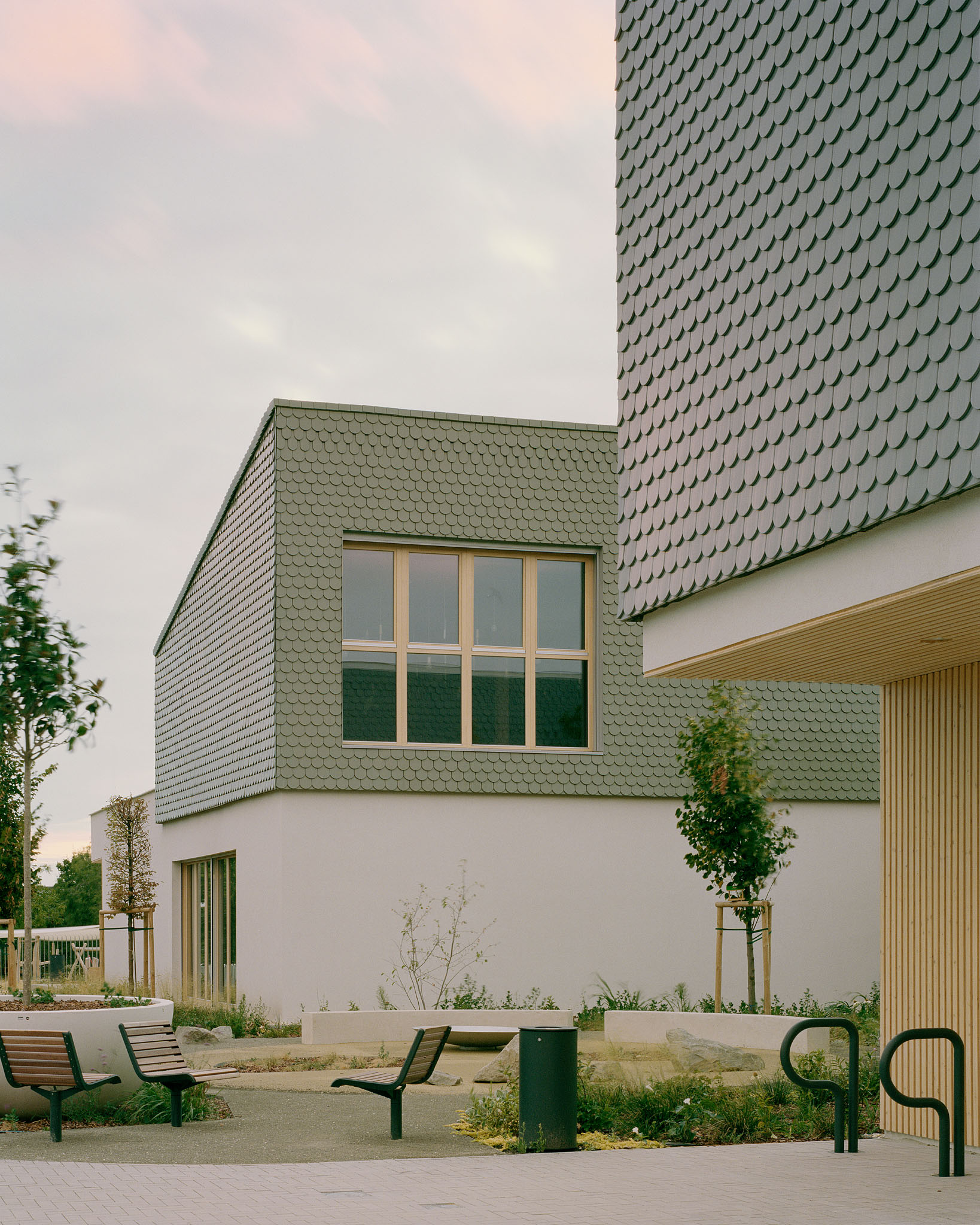Situated in a rapidly growing neighborhood attracting young families, there was an increasing demand for childcare facilities. In response, the municipality developed the site with nursery, kindergarten, pediatric clinic, and public playground. The architects wanted to evoke the original grove feel of the site. So the "children's grove" was born. The result: a small ecological footprint, innovative solutions, a pollinator-friendly garden—a building that can educate about environmental awareness.

